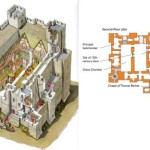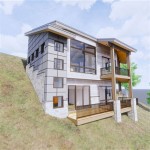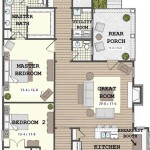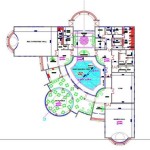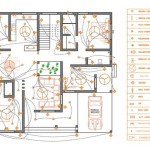4 Bedroom House Plans: One Story Designs in Ghana
Single-story, four-bedroom house plans have gained considerable popularity in Ghana due to their accessibility, affordability, and suitability for various family sizes and lifestyles. These designs often prioritize open living spaces, functional layouts, and efficient use of land, making them a desirable choice for both new homebuyers and those looking to upgrade their existing residences. This article will explore the considerations, benefits, and design elements commonly associated with four-bedroom, single-story house plans in the Ghanaian context.
Factors Influencing Design Choices
Several factors significantly influence the design of a four-bedroom, one-story house in Ghana. These include climate, cultural preferences, building regulations, and budget constraints. Understanding these factors is crucial for achieving a functional, comfortable, and aesthetically pleasing home.
Climate plays a vital role. Ghana's tropical climate necessitates designs that prioritize ventilation and natural light. Large windows, strategically placed to capture breezes, are common features. Overhanging eaves and verandas provide shade, reducing the intensity of direct sunlight and keeping the interior cooler. The orientation of the house is also important, with careful consideration given to minimizing east and west-facing walls, which receive the most intense sunlight.
Cultural preferences heavily influence the layout and spatial organization. In many Ghanaian cultures, a clear separation between public and private spaces is desired. The living room serves as a space for entertaining guests, while the bedrooms provide privacy for family members. Ample kitchen space is also crucial, reflecting the importance of home-cooked meals and communal dining. Courtyards, although less common in modern designs, can offer secluded outdoor spaces for relaxation and socializing.
Building regulations impose specific requirements that all house plans must adhere to. These regulations address aspects such as setback distances from property lines, plot coverage ratios, and structural integrity. It is essential to engage with qualified architects and building professionals to ensure compliance with these regulations throughout the design and construction process. Furthermore, obtaining the necessary permits and approvals from local authorities is crucial to avoid legal issues down the line.
Budget constraints are a significant reality for most homebuyers. Cost-effective design choices are therefore paramount. This may involve utilizing locally sourced building materials, opting for simpler roof designs, and minimizing elaborate architectural details. Efficient space planning can also help to reduce the overall footprint of the house, thereby lowering construction costs. Prioritizing essential features and postponing non-essential additions to a later phase can further help to manage the budget effectively.
Benefits of Single-Story, Four-Bedroom House Plans
One-story, four-bedroom house plans offer several distinct advantages. Accessibility is a primary benefit, particularly for individuals with mobility issues, families with young children, and elderly residents. The absence of stairs eliminates the risk of falls and allows for easy navigation throughout the house.
Construction and maintenance costs are often lower compared to multi-story buildings. Single-story structures require less extensive foundations and scaffolding. Roof maintenance is also simpler and less expensive to undertake. The simplified design can translate into quicker construction timelines, allowing homeowners to move in sooner.
Enhanced natural light and ventilation are inherent advantages of single-story designs. The ability to incorporate windows and vents on all sides of the house maximizes the potential for cross-ventilation and reduces the reliance on artificial lighting and air conditioning. This can lead to significant energy savings and a more comfortable living environment.
Flexibility in layout and design is another appealing aspect. The absence of load-bearing walls associated with upper floors allows for greater freedom in interior space planning. Rooms can be easily reconfigured or adapted to changing needs. Furthermore, single-story houses often blend seamlessly with the surrounding landscape, creating a harmonious relationship between the built environment and the natural environment.
Key Design Elements and Considerations
Several key design elements and considerations are pivotal in creating a functional and aesthetically pleasing four-bedroom, one-story house plan in Ghana.
Space Planning: Efficient space planning is crucial to maximizing the use of available square footage. The layout should prioritize clear circulation paths, ensuring that occupants can easily move between different areas of the house. The living room, dining area, and kitchen should be strategically located to create a cohesive and functional living space. Bedrooms should be positioned to ensure privacy and minimize noise intrusion. Considerations should be given to the size of each bedroom to comfortably accommodate furniture and allow for adequate personal space.
Room Sizes and Layout: The size of each room should be commensurate with its intended use. The master bedroom typically requires more space than the other bedrooms, as it often includes an ensuite bathroom and a walk-in closet. The living room should be large enough to accommodate comfortable seating arrangements and to serve as a gathering space for family and guests. The kitchen should be designed with sufficient counter space, storage cabinets, and appliances to facilitate efficient meal preparation. The inclusion of a dining area, either adjacent to the kitchen or in a separate room, provides a designated space for meals.
Ventilation and Natural Light: Maximizing natural light and ventilation is paramount to creating a comfortable and healthy living environment. Large windows and doors should be strategically placed to capture breezes and to allow sunlight to penetrate deep into the interior. Cross-ventilation can be achieved by positioning windows on opposite sides of the house. Overhanging eaves and verandas provide shade, reducing the intensity of direct sunlight and preventing overheating. The orientation of the house should be carefully considered to minimize exposure to the intense afternoon sun.
Materials and Finishes: The choice of building materials and finishes should be guided by factors such as durability, aesthetics, and cost-effectiveness. Locally sourced materials, such as concrete blocks and timber, are commonly used in Ghanaian construction. Roofing materials should be durable and weather-resistant, able to withstand heavy rainfall and strong winds. Interior finishes, such as flooring, wall paint, and ceiling materials, should be chosen to complement the overall design aesthetic and to provide a comfortable and inviting living space. The use of lighter colors can help to reflect sunlight and to create a brighter and more spacious atmosphere.
Plumbing and Electrical Systems: Carefully planning the plumbing and electrical systems is essential to ensure the functionality and safety of the house. The placement of bathrooms and kitchen should be strategically considered to minimize plumbing runs and to facilitate efficient drainage. Electrical wiring should be installed by qualified electricians and should comply with all relevant safety standards. The inclusion of adequate electrical outlets and lighting fixtures is crucial to meet the occupants' needs. Consideration should be given to the potential for future expansion and the installation of solar panels or other renewable energy sources.
Outdoor Spaces: Integrating outdoor spaces into the design can enhance the livability of the house. Verandas provide shaded outdoor areas for relaxation and socializing. Gardens can be created to provide a sense of tranquility and to enhance the aesthetic appeal of the property. Courtyards, although less common, can offer secluded outdoor spaces for recreation and privacy. The design of outdoor spaces should be carefully integrated with the overall architectural style of the house.
Security Considerations: Security is a significant concern in many urban areas. Incorporating security features into the design can help to protect the occupants and their belongings. High walls or fences can provide a physical barrier. Security gates and burglar bars can deter intruders. Security lighting can illuminate the perimeter of the property and deter criminal activity. The installation of security systems, such as alarms and surveillance cameras, can provide an additional layer of protection. Design elements like strategically placed windows can afford views of approaches to the dwelling.
Sustainable Design Principles: Incorporating sustainable design principles can help to reduce the environmental impact of the house and to improve its energy efficiency. The use of energy-efficient appliances and lighting fixtures can significantly reduce energy consumption. The installation of solar panels can provide a renewable source of electricity. Rainwater harvesting systems can collect rainwater for use in irrigation and other non-potable purposes. The use of recycled or reclaimed materials can reduce the demand for virgin resources. Good insulation can minimize heat loss in the winter and heat gain in the summer, reducing the need for artificial heating and cooling.

House Plans Ghana Holla 4 Bedroom Plan In Four

Ghana Dypsis House Floor Plans

Ghana Floor Plans 4 Bedrooms And 3 Bathrooms For All N Countries

4 Bedrooms Plan For Ghana All Tropical Climate Countries

4 Bedroom House Plan For A Growing Family In Ghana

4 Bedroom Single Y Family Ghana House Plan Huge Master Walk In Closet Ensuite Inclusive

4 Bedroom House Plan For A Growing Family In Ghana

House Plans Build Your Dream Home In Ghana And All N Countries

House Plans Build Your Dream Home In Ghana And All N Countries

4 Bedrooms Plan For Ghana All Tropical Climate Countries

